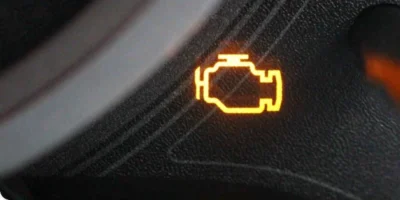What do you need to know to buy a classic car. Our guide outlines what you should consider before buying a classic, cult or exotic car — and the differences between them.
How to buy cars safely online and what to watch out for
Anyone who wants to buy a car now, regardless of whether it is new or used, is faced with a difficult decision. Not only the diesel scandal and threatened driving bans are causing uncertainty among buyers. There are also more and more cars that are fairly new and exotic.
How to buy a classic car
There is actually nothing in the automotive sector that does not exist: small, large, tall, flat, closed, open, fast, slow and even cars that can swim. When you ask drivers what their dream car is, completely exotic models and brands often come as the answer. But when it comes to signing a sales contract, the tried and tested is preferred.
Everyone wants to stand out from the crowd. Individuality can often be achieved through expensive extras, and you need to consider whether you want to pay the extra cost these mean, if they are something you do not want.
If this is your first classic car, you are better off looking at non-exotics that will still have a large network of workshops and good parts availability. Classic cars that had larger production runs when they were new, and sold in very large numbers, mean that there is still greater availability for parts than you will find for the exotic cars that were only produced in very small numbers.
For example, think about the availability of parts and components for a Volkswagen Beetle compared to something like the De Tomaso Pantera.
Get to know the car make’s clubs and network
Once you decide on the make and model you want to buy, it is worthwhile to get in contact with any enthusiast clubs devoted to it. Not only will you pick up valuable knowledge and insights from them to buy a classic car, but they are also a great network for cars for sale and for parts and knowledge about who are the most skilled mechanics.
For example, if you are looking at a Jaguar E-Type, get in touch with the Jaguar Drivers club and even E-Type clubs.
Jaguar XJ-S problems, performance and reliability reviewed
Buy a classic car: downsides to buying an exotic car
- Large-scale production makes cars inexpensive (in the literal sense! Not cheap).
- “Butter & Bread” cars are usually fully developed and problem-free for “normal car drivers” in daily use.
- Cars that are only very rarely bought new are difficult to sell even as used cars and with a high loss of value.
- Exotic car brands often only have a very thin network of authorized workshops. That can cause a lot of driving when it comes to guarantee and warranty issues.
- As exotic cars get old, spare parts problems can arise. The original manufacturer is often no longer on the market and the car is difficult to repair (Daihatsu, Saab).
- The exotic among the exotic are subsequently converted cars. A massive quality problem usually occurs here, which is rare.
- Expensive exotics à la Ferrari, Lamborghini and Bentley tend to be drivable works of art at some point and then actually do not fall under the umbrella term “car”.
The other exotic species: dream cars
Exotic is usually translated as “rare” and “exceptional”. There are still automakers today who are little known and make relatively few cars. These include British companies such as Lotus and Morgan, but also German subsidiaries of the big car names such as Alpina and AMG. Cars of these brands are almost unaffordable new, but quite affordable as used cars.
In order to be happy with such collector’s and collector’s items, you either need your own expertise or a workshop specializing in these brands (and even better, the respective models!). Everyone has to decide for themselves whether this category of car can be called “inexpensive” when it comes to maintaining the vehicle. Euros and cents are not everything in connection with automobiles, there is also the so-called “fun dividend”, which you can read in the driver’s eyes after every trip.
However, this is usually only paid out after a significant investment in the vehicle.
And what about “cult cars”?
Car models experience “cultic” admiration, which were already bestsellers in their “lifetime” and were either driven by a large number of people or would have liked to be driven as dream cars. Or a car becomes a “cult car” when it has won victories on the rally and racing slopes of the world and still (at least in theory) can park in front of the doors of the houses in the suburbs.
An example of this is the Peugeot 205 GTI, which dominated the “Paris-Dakar” rally for some time, and of course the evergreen Porsche 911, which has already won almost every four-wheeled competition for best times.
Similar to the Peugeot 205 GTI is its role model from Germany, the Golf GTI. In 1976, this model was the first compact car that could be moved like a sports car and can be regarded as the forefather of an entire vehicle category.
By the way: Not every “cult car” has to be an old or youngtimer! There are also current vehicles that enjoy great reverence. However, only very few compared to the immense variety of models.
A small selection of “cult cars”
| VW Beetle | 1938-2003 | The car of the economic miracle |
|---|---|---|
| Citroen 2 CV (duck) | 1949-1990 | Less car is not possible / mobile of the French way of life |
| Sachsenring “Trabant” | 1957-1991 | The car of unity / racing cardboard |
| Mercedes 200 D (W123) | 1975-1986 | The indestructible (endurance runner), THE taxi |
| Porsche 911 (air-cooled version) | 1963-1998 | The Invincible (Sports Car) |
| Ford Mustang I. | 1964-1973 | Family sports car / company car from Frank Bullit (Steve McQueen) |
| Austin Mini | 1959-2000 | Beat generation car, winner of the Monte-Carlo Rally |
 Gerhardt Richter is a writer and a trainer at trade technical colleges, specializing in carpentry, plumbing, mechanics and construction.
Gerhardt Richter is a writer and a trainer at trade technical colleges, specializing in carpentry, plumbing, mechanics and construction.




